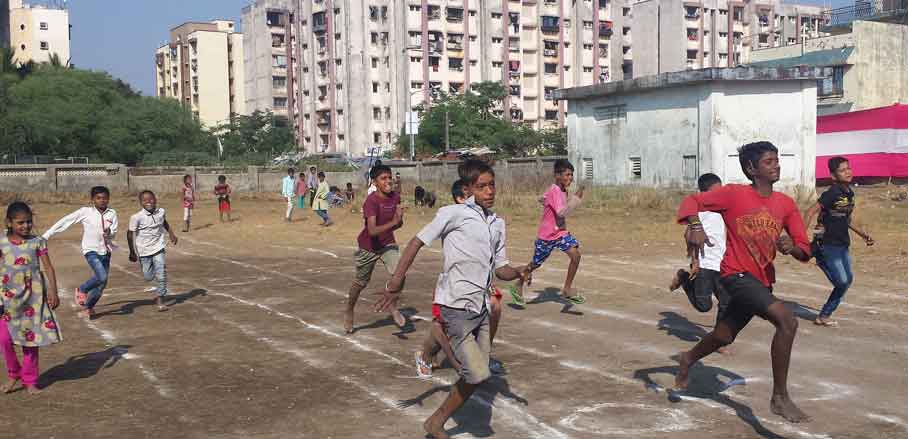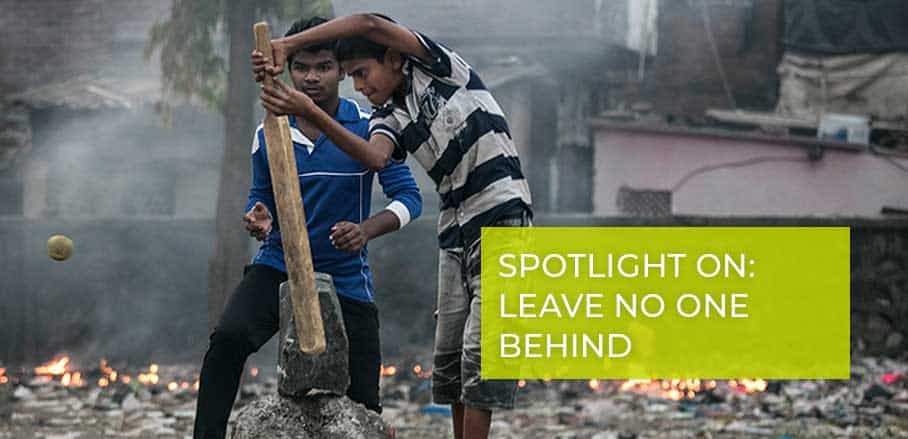Mumbai’s Young People Stake Their Claim to Play
Mumbai, as many other Indian cities, has failed to provide its children and youth with open spaces for playing. But there is a growing movement that demands its right to play – with considerable success, as Doel Jaikishen from Youth for Unity and Voluntary Action (YUVA) writes.
The Virtues of Play
The American physicist Richard Feynman had famously noted, ‘Play is hard to maintain as you get older. You get less playful. You shouldn’t, of course’. The virtues of play have been extolled for years, and its effect on people’s overall development cannot be overstated. However, in busy cities play is increasingly under threat, given limitations of space. A recent study calculated Mumbai’s open space per person at just 1.1 square metre, 31 times lower than in London and 26 times lower than in New York. For the population most primed for play, and who are set to make India the world’s youngest country by 2020 – the children and youth – this is a serious concern.
Against these circumstances, children and youth collectives across the city of Mumbai have been leading a powerful movement to claim their rights. Mostly drawn from informal settlements (popularly known as slums) and resettlement sites, the children and youth are often already disadvantaged in terms of lack of access to adequate homes and facilities. However, this has not stopped them from trying to claim spaces they can access freely, whether for play, expression, or other needs.
When There’s No Room for Play
In the absence of play spaces, India’s vulnerable young persons are mostly restricted indoors, either glued to their mobile phone screens, watching television, or helping their parents with chores. Play outdoors often means contending with a host of risks – bullying, exposure to hazardous substances, fear of accidents, et cetera.
Parents, therefore, often prefer that young persons (especially girls) remain home, but the absence of play affects health and well-being. Even in areas with some opportunity for play, a study discovered how boys continue playing until they are 20, while girls stop when they are around 12 years old.
Resistance Begins
In a neighbourhood in west Mumbai, six grounds for play were wiped out for real-estate activities until just one ground remained. In due course, it was also up for redevelopment. To protect this space, the children and youth collectives in the area joined hands. They invoked their right to play here and organised a long march in 2016 all the way to the local administrator’s office.
Different sports groups, local organisations, and networks extended their support. The collective voices lent strength to the movement. The persevering efforts of the agitating children and youth paid off when the administrator accepted their demands to leave this space free for their use – a huge confidence boost for all the people associated with this movement. Currently, over 500 of them regularly play on these grounds.
Another playground in a neighbouring western suburb had turned unsafe as it was rampantly used by drug abusers. The ground was dirty, with garbage piled high. At first, the children and youth of the locality cleaned the area, continuing even when facing attacks from abusers for trying to claim this space. However, they remained undeterred and lodged complaints with the police against the misuse of the space and their harassment.
A long march and public meeting helped garner support for the demand for play, and this space started being used by them for their play henceforth. At first, the community offered no support to these youngsters. But once they saw the impact of the movement, they started using these spaces too for cultural engagements. Currently, about 40 to 50 children and youth regularly play volleyball, cricket, and badminton on these grounds. In this way, a space formerly characterised by crime and addiction has now been integrated within the community and is being used for play and other recreational activities.

Children enjoy a race at the space claimed in Malad, Mumbai. © YUVA
Claiming Spaces Across the City
In 2017, youth collectives across slums got together and decided to launch a ‘claiming spaces campaign’. This was organised through their city-wide forum facilitated by Youth for Unity and Voluntary Action (YUVA). The youth identified new spaces to reclaim for play, discussed strategies that had worked so far and what had failed, and elaborated on a plan of action to claim spaces for play across the city.
In the next few months, more spaces started opening up for the youth. Girls who had no opportunity to leave their houses earlier began playing in larger numbers across neighbourhoods. In some cases, youth collectives could organise sports training on these grounds. Gradually, these spaces are also being used by local communities (women take walks there, young couples have a safe space to meet in, and so on).
Related to the claiming spaces movement, young persons have also articulated their demands for other community requirements, such as meeting spaces, libraries, community centres, and gymnasiums – and their voices are being heard. Community centres have grown in different areas, and the youth are using these spaces to talk about their issues, development concerns, advocacy strategies and more. In total, the claiming spaces movement has gathered strength in five communities, and has spread to eleven other areas as well.
As vulnerable children and youth across the city invoke their right to play and take active steps to protect and uphold it, their commitment and resilience has inspired others to join them. The movement seeks to empower not just the children and youth, but the entire community with the growth of inclusive spaces which can be freely used by all.
This article is an adapted and shortened version of “#UprootedChildhoods — Claiming Spaces for Play” published on Medium.
- Mumbai’s Young People Stake Their Claim to Play - 2. July 2019
